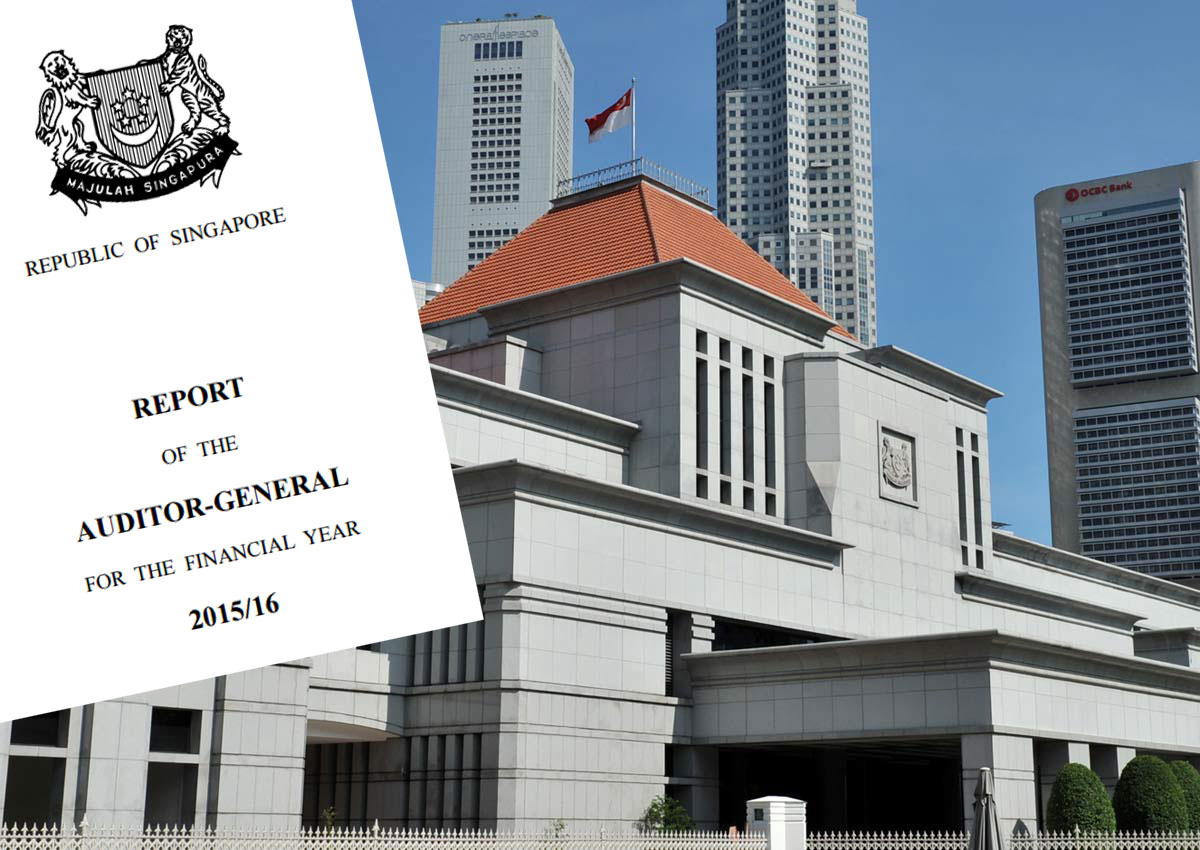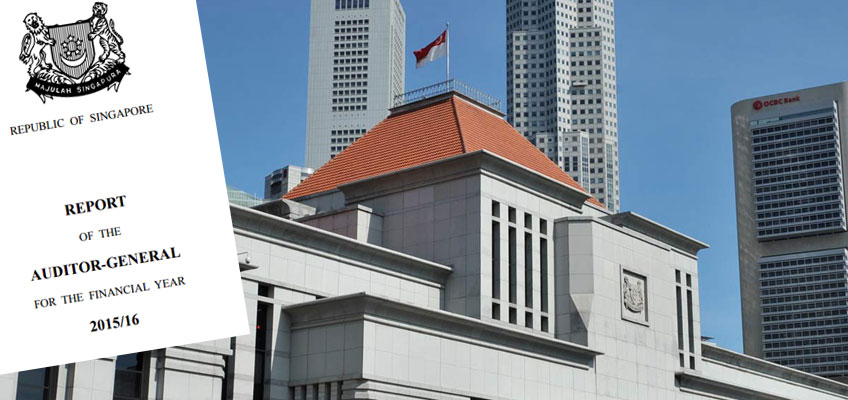SINGAPORE – The Auditor-General’s Office (AGO) released its report for the financial year 2015/16 on the proper accounting, management and use of public resources on Tuesday (July 26).
Here are 10 things to know about the report:
1. The AGO audited a total of:
– 16 ministries
– 11 statutory boards
– Eight organs of state
– Five government-owned companies
– Four government funds
– Three other accounts
Selective audits were conducted on the eight statutory boards and three government funds, which involves checks on selected areas like financial irregularities, excesses, extravagance, or inefficiency.
2. The Housing Development Board (HDB)
Inadequate financial controls were found in HDB’s carparks which were outsourced to commercial operators. There were many instances were vehicles were not charged parking fees and motorists had evaded payment by manipulating the carpark system.
The AGO said that these problems could have been detected if HDB compared the monthly reports of these carparks from the operators with data from its carpark system.
HDB was also slow in making final payments to contractors handling construction and upgrading projects, which was unfair as it could affect the cashflow of these contractors, AGO revealed, with delays of up to 3.3 years uncovered.
3. Land Transport Authority (LTA)
A potential $13.93 million was under-collected by LTA at the toll booths at Tuas and Woodlands Checkpoints, resulting in potential loss of revenue.
The report also said there was a lack of effective system at the immigration booths to ensure motorists paid their fees.
4. The Ministry of Foreign Affairs (MFA)
MFA overpaid telecommunication providers $109,868 and wasted $80,744 as it failed to unsubscribe to lines that were no longer needed. It added that MFA did not carry out proper verification of invoices to ensure that amounts billed were correct.
5. The Ministry of Law
Only one officer from the Public Trustee’s Office under the Ministry of Law handled assets belonging to deceased persons. Discrepancies in the recording of assets received from nursing homes were also discovered by the AGO. There were no independent checks or proper accounting, resulting in the risk of misappropriation.
6. Nanyang Polytechnic (NYP)
Calling NYP practices “a disregard for financial controls and proper governance”, the AGO highlighted conflicts of interest in transactions between the Polytechnic and its subsidiary, Nanyang Polytechnic International Pte Ltd.
NYP board members with vested interests in a subsidiary were involved in the evaluation and decision-making process on matters relating to the same subsidiary. Market rates were also not charged to the subsidiary for using NYP’s premises, resulting in hidden subsidies and excess funding totalling $8.38 million.
7. The Ministry of Education (MOE)
Controls by MOE, Nanyang Technological University, and the National University of Singapore to recover tuition fees and study loans were inadequate, AGO said.
The recovery of loans, carried out by third-party agents, were not timely.
Prompt action was also not meted on scholars who did not serve their required bonds in 16 cases out of 30 scholarships tested, AGO said.
8. The Ministry of Culture, Community and Youth (MCCY)
The National Arts Council (NAC) paid a consultancy fee of $410,000 for the construction of a bin centre costing $470,000. This means the consultancy fee took up 87.2 per cent of the total cost of the construction.
The AGO labelled the expenditure as “inadequate assessment on the reasonableness of the exceptionally high consulting fee.”
Explaining that the construction of the bin centre was complex, MCCY acknowledged in a ChannelNews Asia report that the cost assessment could have been “more robust”.
47 out of 164 variation works were carried out for the Victoria Theatre and Victoria Concert Hall before approvals were given, with delays in obtaining approval amounting to 3.5 years
9. The Ministry of Home Affairs (MHA)
The Singapore Police Force (SPF) had overpaid its Volunteer Special Constabulary (VSC) officers allowance, amounting to about $2.63 million over a span of over seven years from 2008 to 2015.
This was due to an unauthorised approval to increase the VCS officers allowance from $2.80 per hour to $3.60 by the Deputy Commissioner of Police and Permanent Secretary of Home Affairs, who were not authorised under legislation to do so.
10. What happens now?
After the report is submitted to the President and presented in Parliament, the Public Accounts Committee will deliberate on the report and may call upon the public sector entities to account for the lapses where it deems necessary.
grongloh@sph.com.sg







